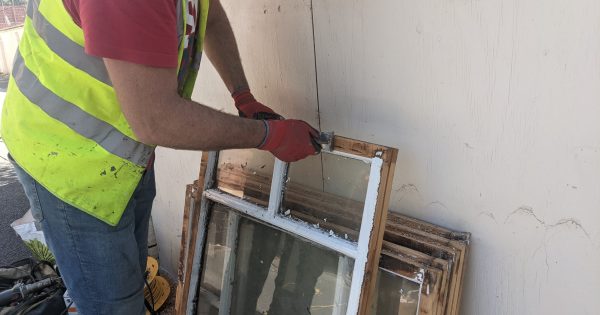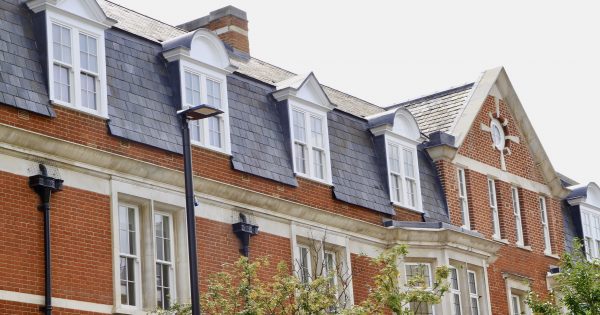Wed May 28
Restoring timber sash windows in listed buildings is a complex yet rewarding undertaking. For developers managing large-scale listed building renovation projects, the process demands careful planning, a deep understanding of regulations, and collaboration with heritage specialists.
This guide explores the crucial considerations for successful sash window restoration in important buildings, ensuring compliance, quality, and the preservation of historic character.
Understanding listed building status and consent
Listed buildings are recognised for their architectural or historic interest and are protected by law to preserve their character. In the UK, buildings are classified as Grade I (exceptional interest), Grade II (particularly important), or Grade III (nationally important). Each listing grade brings its own set of restrictions and requirements for building renovations.
Before any restoration or repair work begins, it’s essential to determine the building’s listing status. If you are unsure, you can check Historic England’s register using your property’s postcode. Once the status is confirmed, you must obtain listed building consent from the local planning authority for any work that could affect the building’s historic fabric or appearance. This includes both internal and external changes – such as sash window restoration, replacement, or even minor alterations to original architectural features.
Carrying out unauthorised work is a criminal offence, and the local authority can insist that all work is reversed, potentially leading to prosecution. Always consult with your local conservation officer at the earliest stage to clarify what is permissible and to avoid costly mistakes.
Planning a listed building renovation: Key steps
Early engagement with heritage specialists
Large-scale restoration projects in period buildings require the expertise of heritage specialists. TRC Contracts, for example, brings over 30 years of experience and a team of more than 50 specialists to each project, working with architects, contractors, and clients to deliver bespoke solutions for listed buildings. Early engagement ensures that the renovation process respects the historic significance and architectural interest of the property.
Preparing a comprehensive project plan
A successful listed building renovation starts with a detailed project plan. This should include:
- Condition surveys of all sash windows and related joinery
- Documentation of original features and historic materials
- Assessment of repair work versus replacement needs
- Consultation with the local conservation officer
- Preparation of detailed drawings and specifications for listed building consent applications
TRC Contracts’ in-house design team can support this process, ensuring that all design work aligns with both the character of the building and regulatory requirements.
Navigating listed building consent
Obtaining listed building consent is a critical step. Applications must include:
- Accurate drawings or photographs of existing windows
- Proposed designs showing materials, dimensions, and methods
- Justifications for the planned restoration or alterations
The local planning authority will review the application, paying particular attention to preserving the building’s historic features and setting. It’s wise to err on the side of caution and seek professional advice if there is any doubt about the need for consent.
Managing the restoration process
Selecting the right contractors
For large-scale projects, choose contractors with proven experience in listed property renovations. TRC Contracts has delivered window restoration for some of the UK’s most prestigious historic buildings, including Somerset House and the Blackpool Tower Ballroom.
Traditional methods and materials
Restoring sash windows in older buildings demands the use of traditional construction methods and materials. This includes:
- Repairing timber frames and sashes using traditional joinery
- Using lime mortar for repairs and putty for glazing
- Retaining as much original material as possible
- Matching replacement components to original profiles and details
Modern materials may be considered only when they do not compromise the historic character or performance of the window.
Balancing modern living with historic integrity
While maintaining historic features is paramount, developers often need to improve energy efficiency and comfort for modern living. Solutions such as draught proofing, slimline double glazing, and bespoke secondary glazing can be incorporated – subject to listed building consent – to improve performance without detracting from the character of the building.
Project timelines and logistics
Realistic scheduling
Listed building renovation projects often take longer than standard refurbishments due to the need for careful documentation, consent applications, and the use of traditional methods. Allow ample time for:
- Condition assessments and surveys
- Preparation and submission of listed building consent applications
- Review and approval by the local planning authority
- Specialist joinery and repair work
- Unforeseen discoveries during renovation (e.g., hidden decay or previous unauthorised work)
Coordinating with conservation officers
Regular communication with the local conservation officer is essential throughout the renovation process. Their input can help resolve challenges, ensure compliance, and keep the project on track. Building a positive relationship with the local authority can also facilitate smoother approvals and inspections.
Managing access and site constraints
Large-scale window restoration may require scaffolding, careful site management, and phased work to minimise disruption. TRC Contracts often operates as the main contractor, coordinating all aspects of the project to ensure efficiency and quality.
What happens if you carry out work on a listed building without consent?
Carrying out unauthorised work on a listed building is a criminal offence. The local planning authority can insist that all unauthorised work is reversed, and individuals may be prosecuted. Always obtain listed building consent before starting any work.
Working with heritage specialists: Why experience matters
Heritage specialists, like the team at TRC Contracts, understand the intricacies of listed building renovation. Their years of experience, combined with a deep knowledge of traditional construction methods and modern compliance standards, ensure that every project respects the architectural significance and historic features of the property.
TRC Contracts partners with architects, contractors, and property owners to deliver tailored solutions, whether restoring original sash windows or manufacturing bespoke replacements to match historic designs. Their commitment to quality, attention to detail, and understanding of both modern and historic architecture make them a trusted partner for complex projects.
Best practices for developers
- Start early: Engage with heritage specialists and the local planning authority at the outset.
- Document everything: Maintain detailed records of the building’s condition, original features, and all work carried out.
- Use traditional methods: Where possible, repair rather than replace, using traditional materials and craftsmanship.
- Prioritise compliance: Never begin work without the necessary listed building consent.
- Plan for contingencies: Allow time and budget for unexpected findings during the renovation process.
- Communicate: Keep all stakeholders, including conservation officers and property owners, informed throughout the project.
Protecting historic significance while delivering modern value
Managing a large-scale window restoration project in a listed building is a demanding but highly rewarding process. By understanding the legal framework, respecting the historic character of the building, and working with experienced heritage specialists, developers can deliver successful outcomes that stand the test of time.
TRC Contracts brings unrivalled expertise, bespoke design, and a proven track record to listed building renovation projects across the UK. Their commitment to craftsmanship, compliance, and partnership ensures that every restoration project preserves the unique character and value of the nation’s most important buildings.
If you are planning a listed building renovation or require expert advice on sash window restoration for your project, contact TRC Contracts today. Our team of specialists will guide you through every stage of the renovation process, ensuring your project meets the highest standards of quality, compliance, and heritage preservation. Let us help you protect the past while building for the future.
Discover more with TRC Contracts
Choosing the right window style for your architectural design
Advancements in window restoration techniques
The benefits of triple-glazed sash windows in historic buildings





